The UK has a temperate climate with four distinct seasons. This means you can expect to see different kinds of British spiders at different times of the year. Some of the most frequent sightings occur in Autumn, as the cold approaches and spiders begin to find their way into warmer locations, i.e, your house, shed, or garage.
So, if you live in the UK and want to know which spiders are likely to be around, this post is for you.
List Of Common UK Spiders
Below, we outline common types that are found in the UK and help you identify and learn about them.
Noble False Widow Spider (Steatoda Nobilis)
The noble false widow is the most venomous spider in the UK. It is commonly found in Southern England, Wales, and rarely in Scotland. In recent times, false widows have been slowly migrating further north, year upon year, and have been seen as far as Central England.
Despite its name, it is not a true widow spider. However, it does belong to the same family of spiders as the deadly black widow. Although their bite is painful, false widow spiders are yet to prove fatal in the UK. You’ll commonly find these in kitchens and conservatories. Their webs are usually around 1.5 metres off the ground and are messy, tangled or criss-cross patterns of silk.
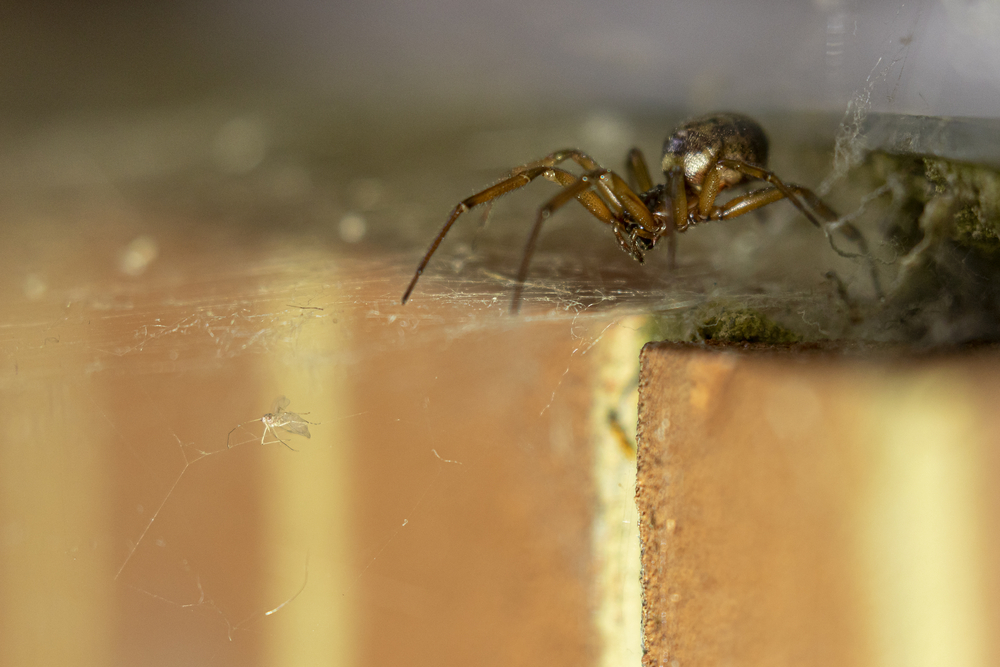
Cupboard Spider (Steatoda Grossa)
You can easily recognise the cupboard spider by their glossy bodies, which are usually purplish brown to black, and have long legs. These spiders are also commonly known as the false black widow. Their bite is not considered dangerous, and will only every bite.
Cupboard spiders got their name for being commonly found in cupboards and storage units. However, they also like hiding in dark places and crevices, often found in out-of-the-way locations like sheds and garages. Outdoors, you’ll often see them under bark and fallen tree leaves.
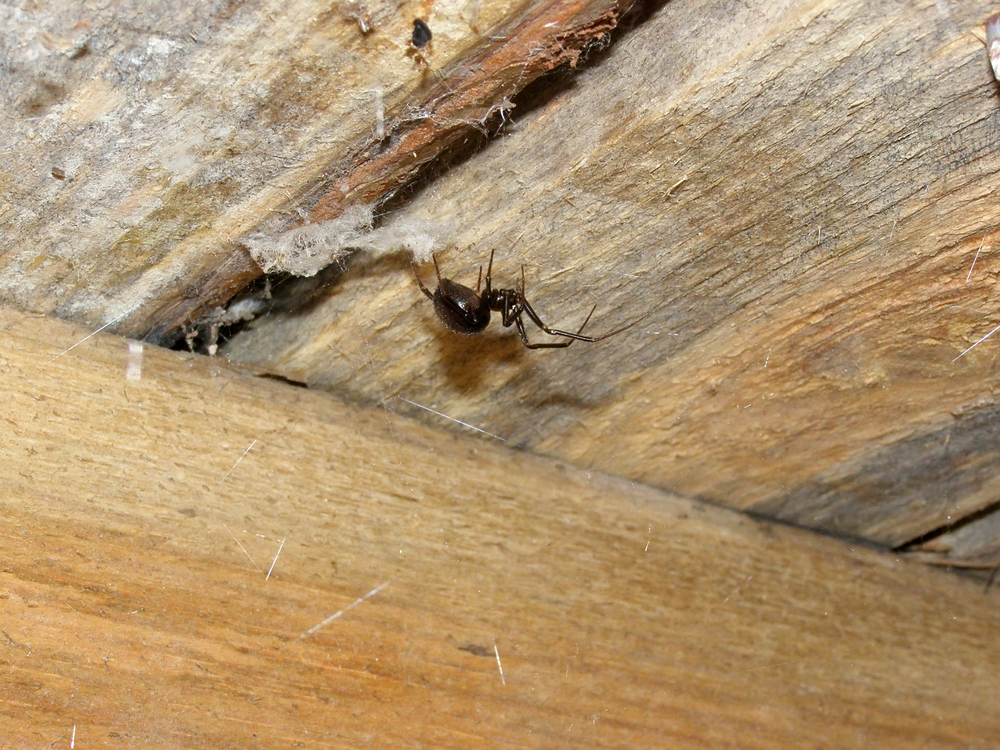
Daddy Long Legs Spider (Pholcidae)
Also known as carpenter spiders or cellar spiders, daddy long legs are one of the most common spiders you’ll see in your home. They have small bodies and long thin legs, sometimes up to 5cm. Although they feed on venomous spiders, daddy long legs bites aren’t as painful as you might think. Their bite can barely puncture human skin, but in the rare instance that it does bite humans, it may cause a minor burning sensation that only lasts a short while.
You’ll often find these spiders in corners of cellars and attics. Outdoors, they can be seen in burrows, under tree bark and in caves.
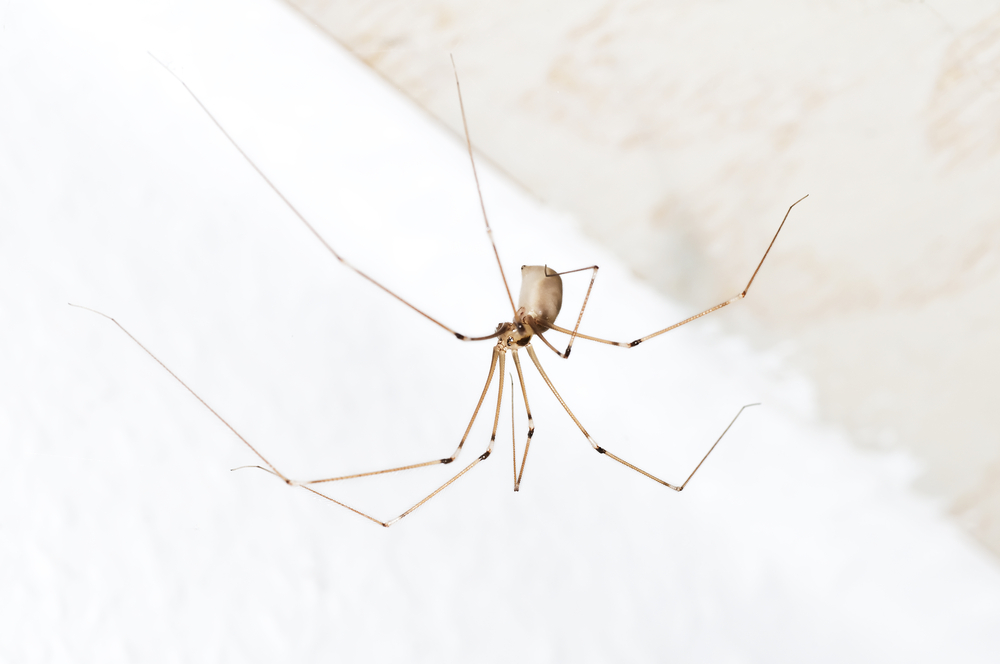
Spitting Spider (Scytodidae)
The spitting spider is relatively small at around 3-6mm. They are slow walkers and have dome-shaped bodies and long straw-cloured legs with dark flecks or stripes.
It earned its name because it expels a jet of sticky venomous liquid to capture its prey, which is usually small insects or other spiders. This spitting is also used as a defence mechanism against other siders and small predators. These spiders don’t build webs, which is why it uses its spitting technique to hunt.
Don’t worry if you come across spitting spiders in the UK, as they are harmless to humans. However, don’t be surprised if you spot one in your home over winter, as they like heated buildings.
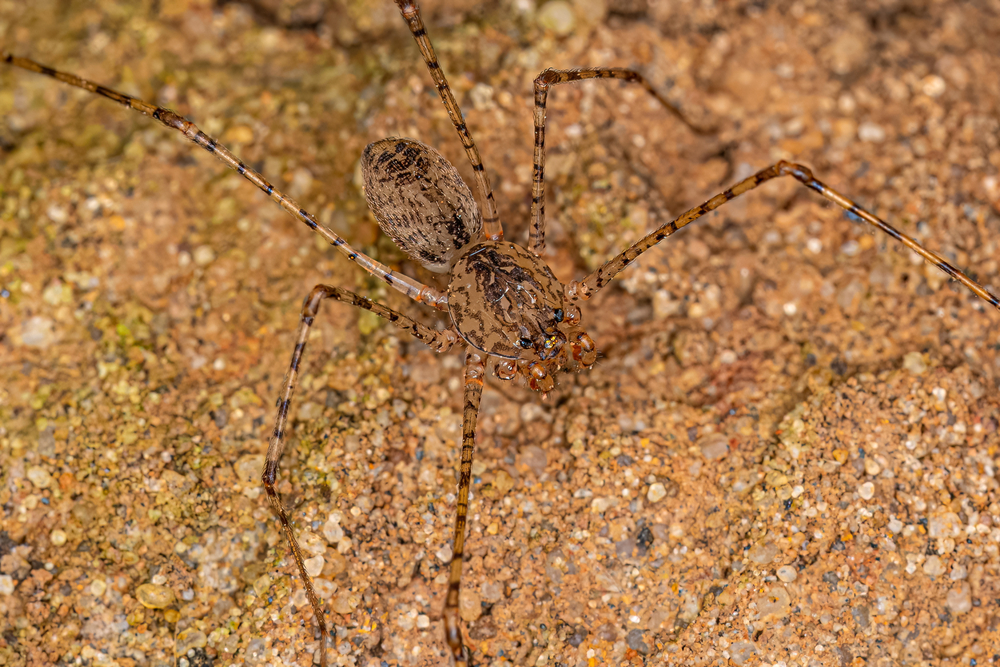
Giant House Spider (Eratigena Atrica)
Although they have been spotted in many parts of the UK, the giant house spider prefers warmer southern areas like East Anglia, especially in Gloucester and Birmingham.
In recent years, the giant house spider has become more active throughout the winter months, and it is becoming more common to see them indoors at this time of year – including your home, particularly under sofas, in the bathtub or behind fireplaces.
This spider has a leg span of around 5-7cm, and you can often see them scurrying across rooms or down walls when you turn on a light source.
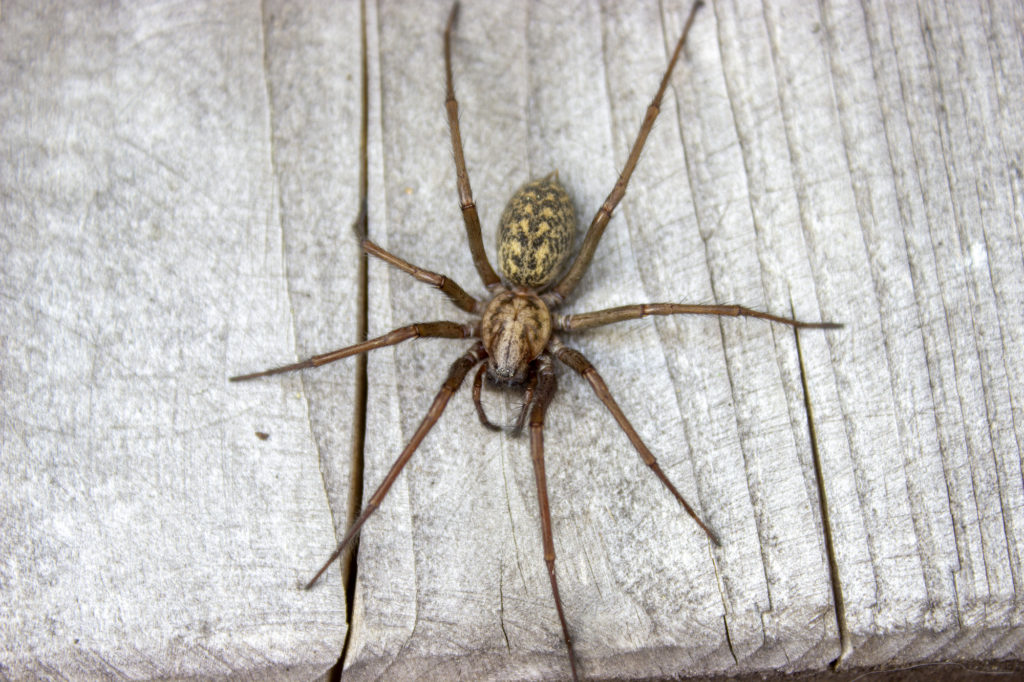
Zebra Jumping Spider (Salticus Scenicus)
Also known simply as jumping spiders, zebra spiders are relatively small species with black and white patterns across their bodies which is why they’ve earned the nickname zebra.
These small spiders are fast and agile and can jump up to 10cm. They like to lurk under rocks and tree trunks, on walls and occasionally inside your home on window frames.
Although they produce venom to subdue and hunt their prey, a bite from a zebra jumping spider to humans will likely cause nothing more than a minor irritation.
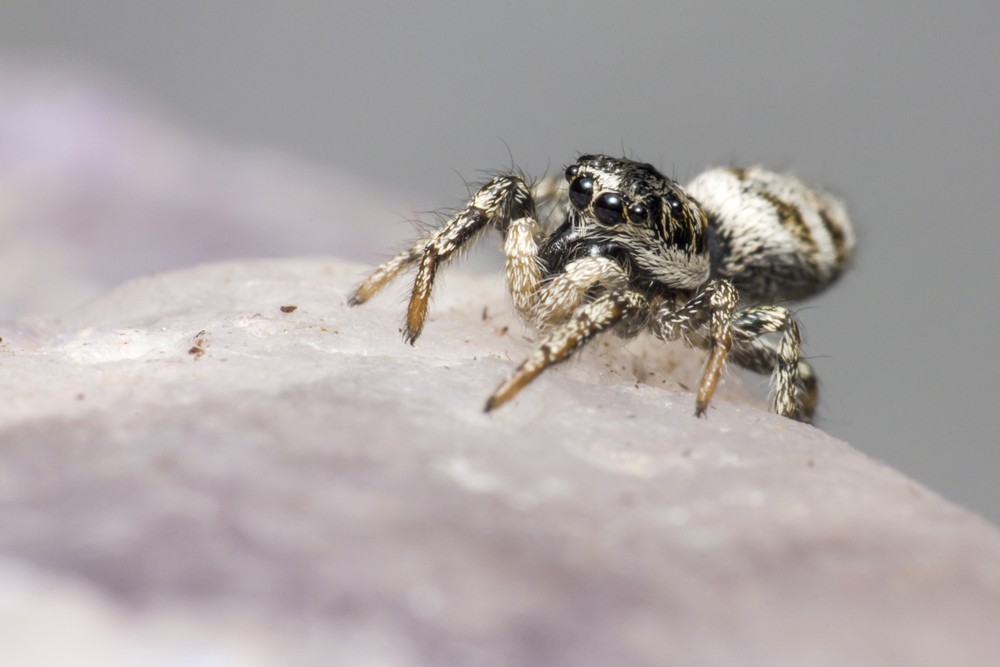
Money Spider (Linyphiidae)
Money spiders are another species that can infest your home. Also known as sheet weaver spiders, this species of tiny spider is dark brown and usually around 5mm in length. They’re found in wooded areas and your garden, bush or ornamental plants.
These spiders are relatively common in the UK, and you’ll find them all over the country – mostly at night. They’re most often spotted around summer and Autumn. Due to their tiny size, they’re often lifted and floated around with the breeze. They are generally very harmless to humans; however, getting bitten might sting and cause some irritation, but thankfully, nothing too worrying.
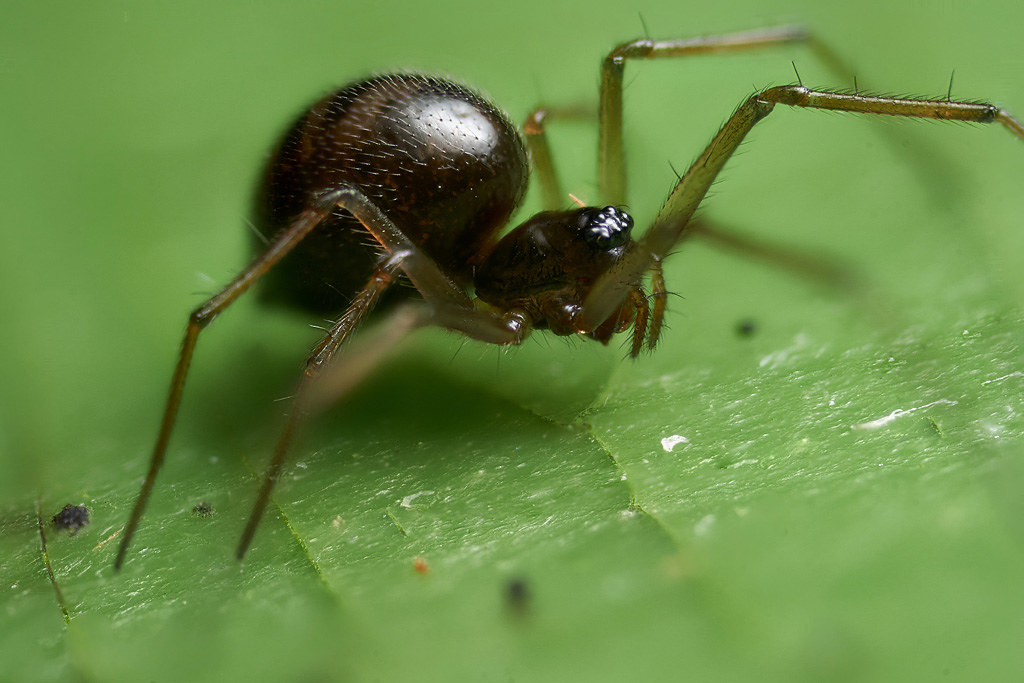
Crab Spider (Thomisidae)
More of an outdoor spider than one you’ll find indoors, crab spiders are commonly spotted between march and august. You’ll usually find them in low-lying vegetation, gardens, hedgerows and under logs. Their legs are very long and slightly curved, which is why they earned their name. They like to hide among flowers too.
Don’t be alarmed if you pop inside your home and see a crab spider walking across your floor or wall. Perhaps menacing in appearance, these spiders are more interested in chasing flies, bees and other common insects. Although they carry venom, it’s enough to hunt their prey and not enough to harm humans.
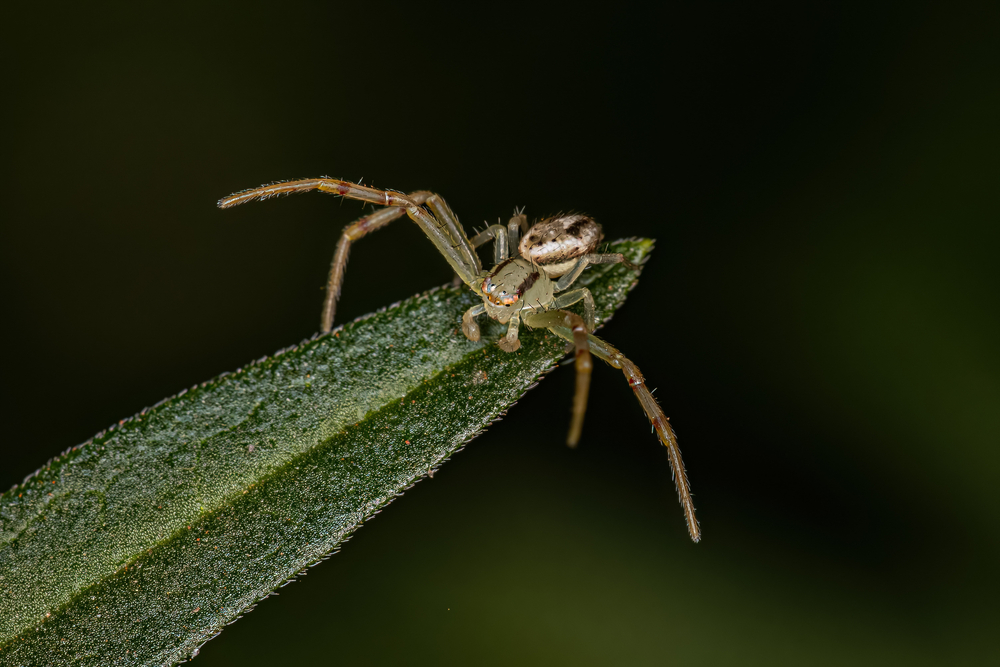
Cardinal Spider (Tegenaria Parietina)
The cardinal spider is the largest spider in the UK, with a leg span of up to 14cm. They are usually found inside walls and dry, deserted buildings, particularly in the south of England. But don’t be surprised if you see one in lurking in room corners. They prefer warm areas, especially sunny and unsheltered spaces.
Although they are huge, they’re not considered dangerous to humans and will only bite if threatened. The bite is relatively painless and not cause for concern.
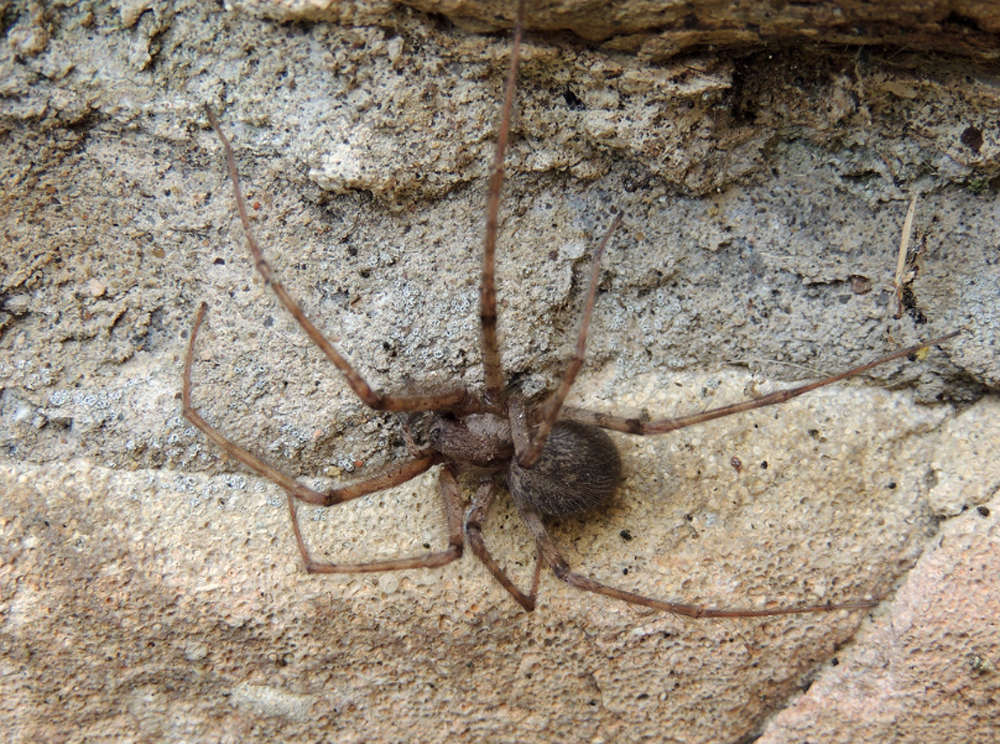
Orb Weaver Spider
The orb-weaver spider species is a large and widespread family of spiders found in the UK. They can grow between 6-20mm and have long, hairy legs.
These spiders are known for building orb-shaped webs in forests and gardens and can be found been July and November. The first major sign of their presence will be the web they weave between trees, bushes, doorways, and other openings, such as windowsills. These webs can be enormous, some up to six feet wide. Although they are non-aggressive, walking into a giant web accidentally could cause one to land on your face or body, and lead to a bite. The venom from an orb weaver spider is not toxic to humans but may hurt for a short while.
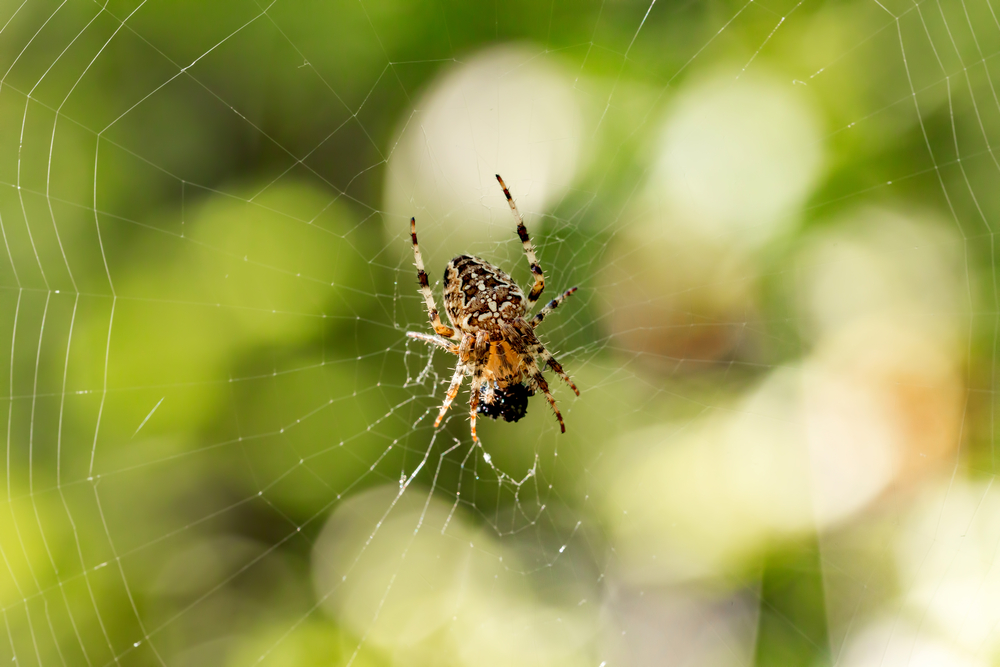
Tube Web Spider (Segestria Florentina)
Tube web spiders, also known as the green-fanged tube web spider, is a large, black species which can look rather menacing. They are among the larger species of UK spiders with a body length of up to 22mm. You’re probably picturing one of these when you think of big, black, hairy spiders. And they aren’t as harmless as some of the other intimidating spiders either; a bite from a tube web spider can be likened to a bee sting.
You might be pleased to know that it’s generally restricted to coastal regions in south-west Britain and North Wales. Usually, you’ll find it’s made a home in cracks within rock outcrops or old walls.
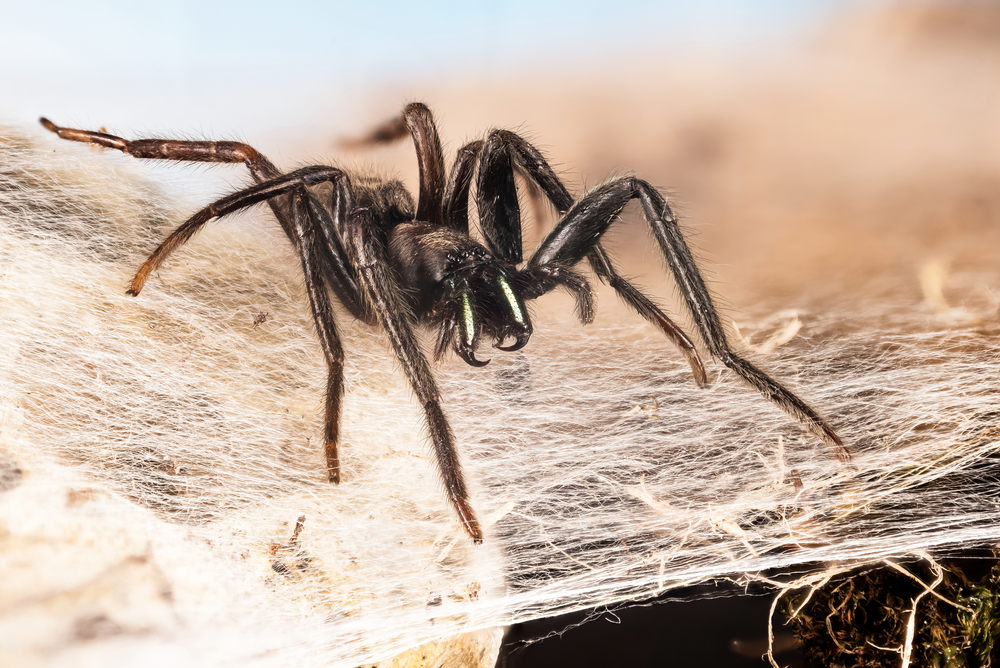
Additional Resources
Sources and References
- Spiders In Your Home – nhm.ac.uk
- UK Spiders That Bite Humans – empirepestcontrol.co.uk

Ash is a contributing author who has been writing about wildlife for as long as he can remember. He has a vast knowledge of many different types of animals, from the tiniest shrews to the great whales that live in the deepest oceans.

Hello,
Is it possible that I have seen a black big spider that you call Tube Web Spider (Segestria Florentina) in Scotland? It’s the description that best suits what I saw, unfortunately in my flat!
Thank you
Andrea
Yes, it is possible to encounter a tube web spider (Segestria florentina) in Scotland. While these spiders are more commonly found in southern parts of the United Kingdom, they can occasionally be found in other regions, including Scotland. Segestria florentina is known for its distinctive appearance with a long, dark, cylindrical body and prominent fangs.
If you believe you’ve encountered a tube web spider in your flat, it’s advisable to exercise caution. While they are not aggressive towards humans and typically prefer to hide in their webs, it’s best to avoid handling them, as they do possess fangs capable of delivering a bite.
If you’re concerned about the presence of these spiders in your living space, you may want to consider contacting a local pest control professional or an arachnologist who can help identify and provide guidance on managing the situation.